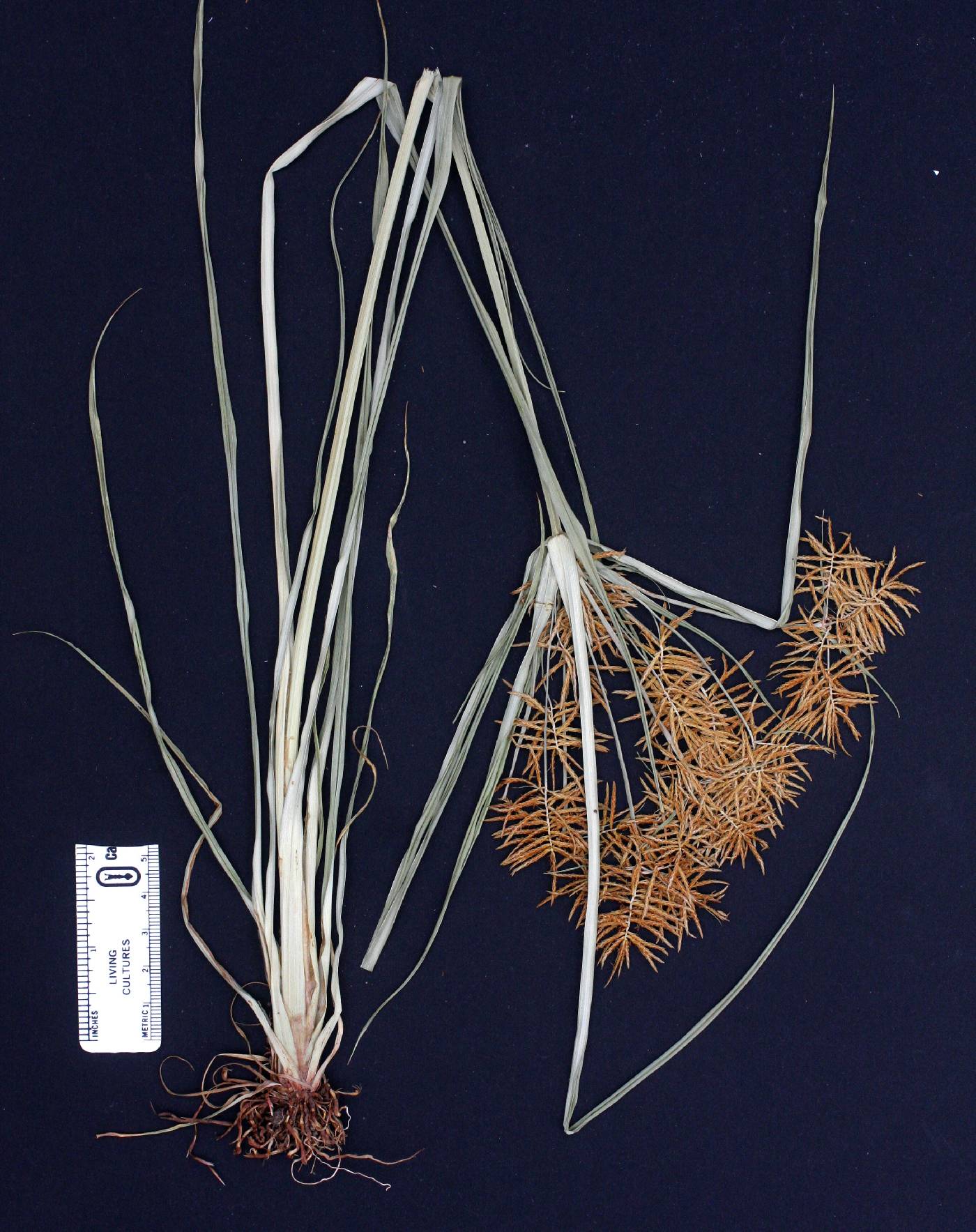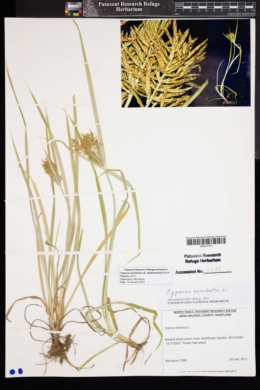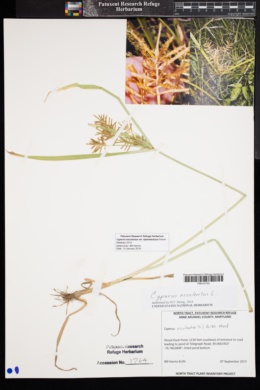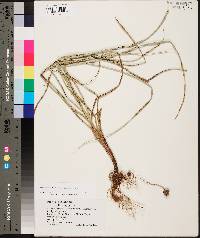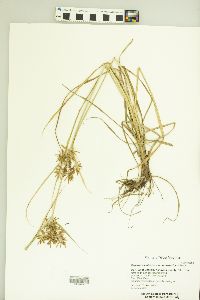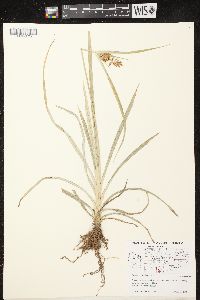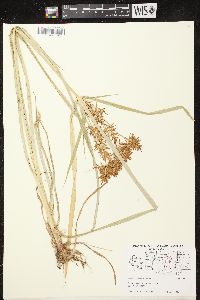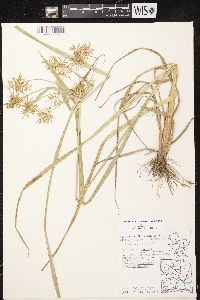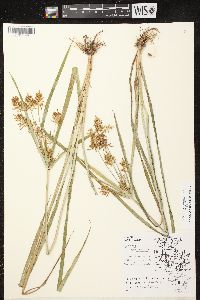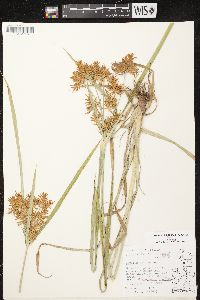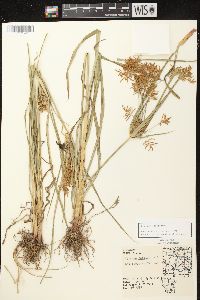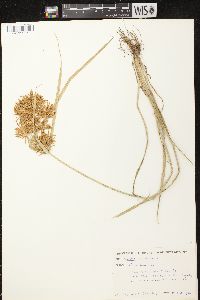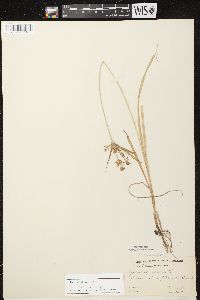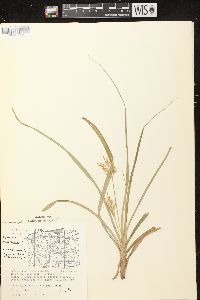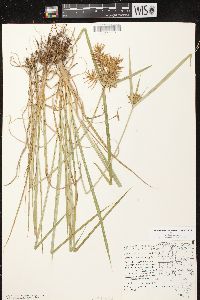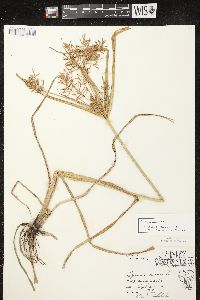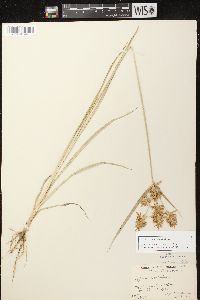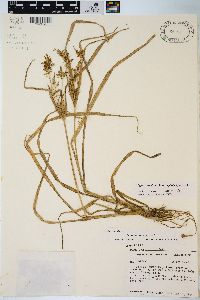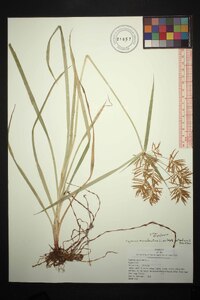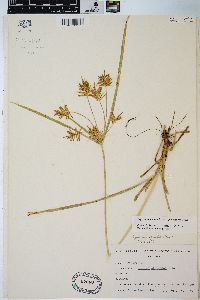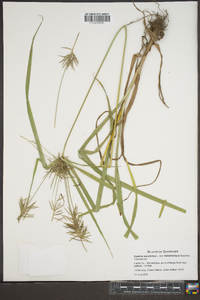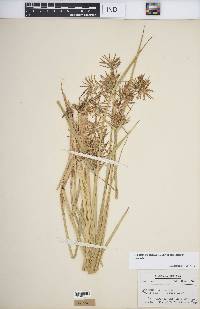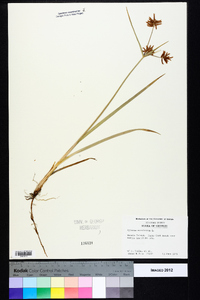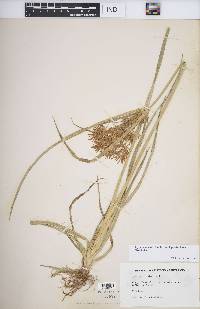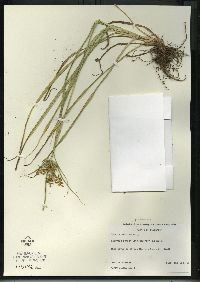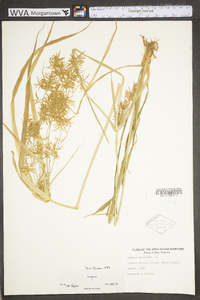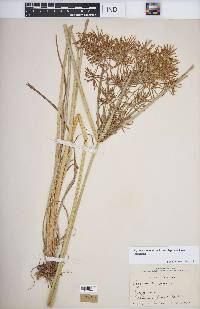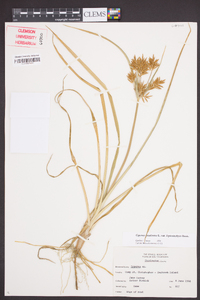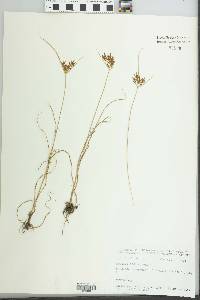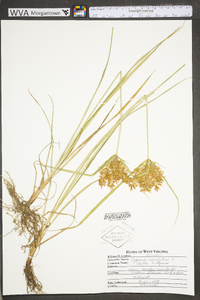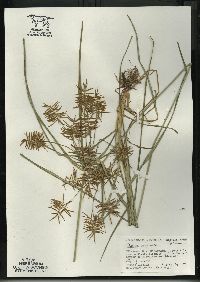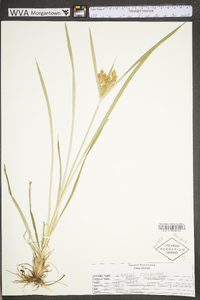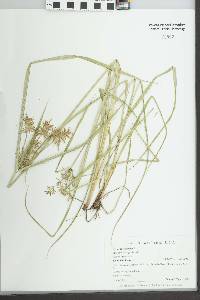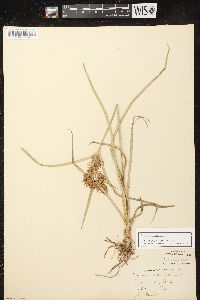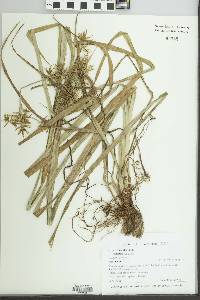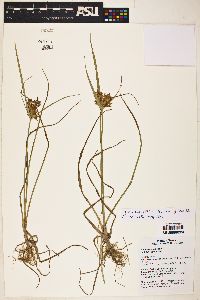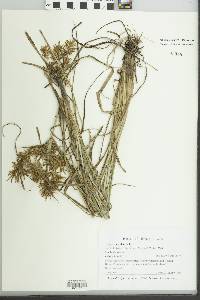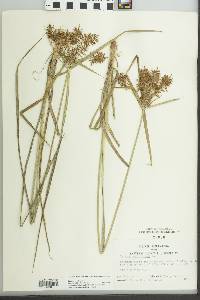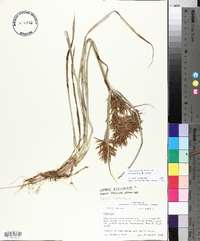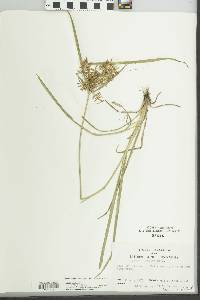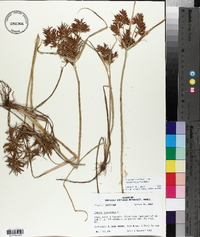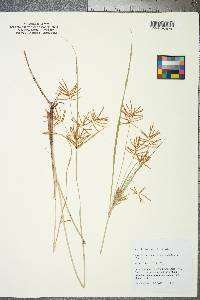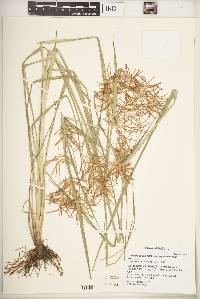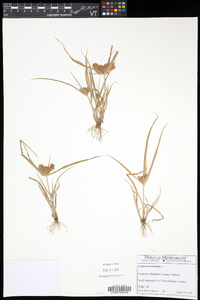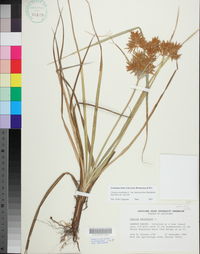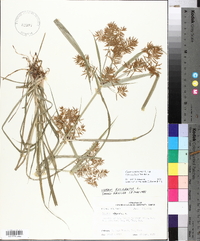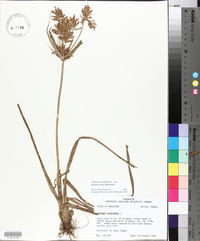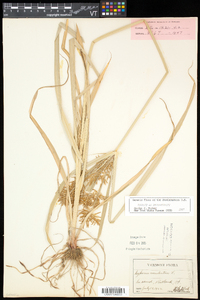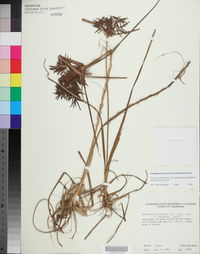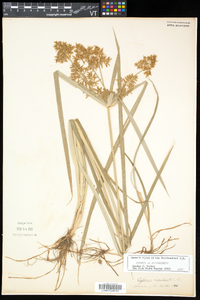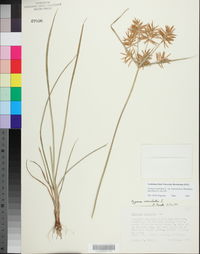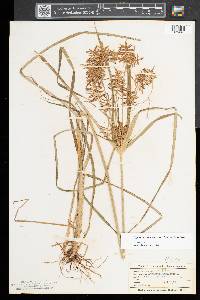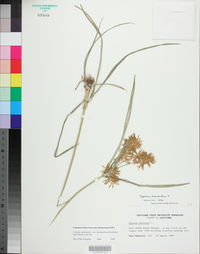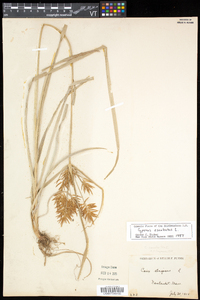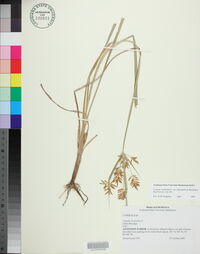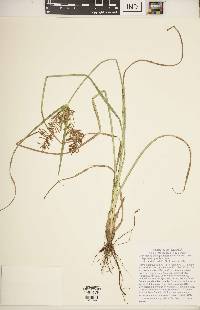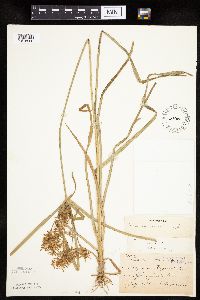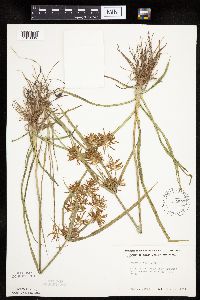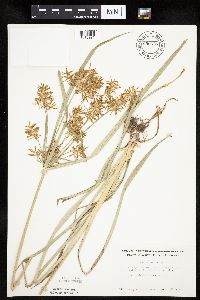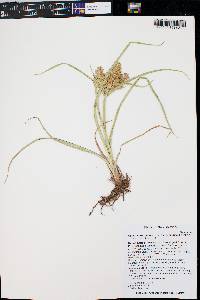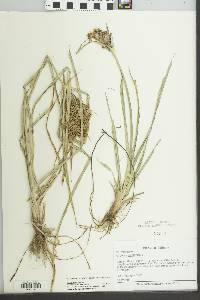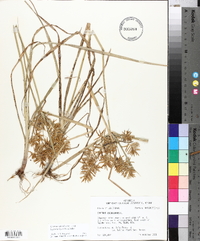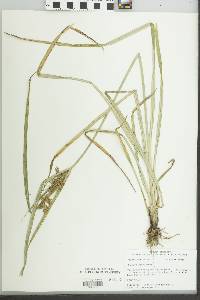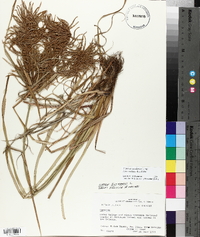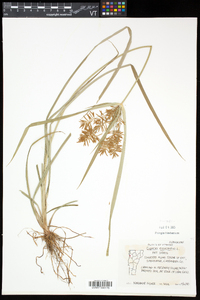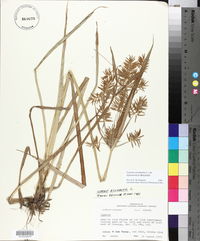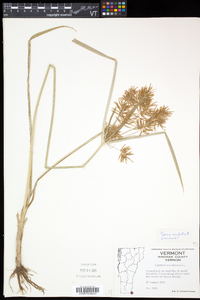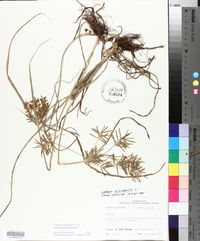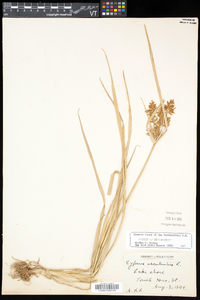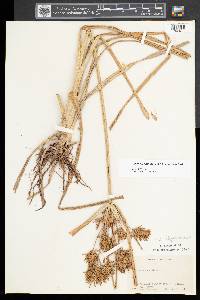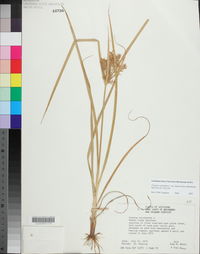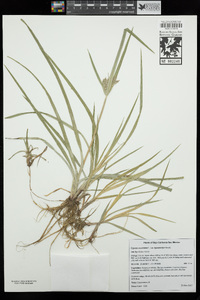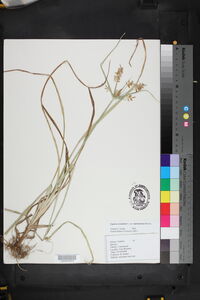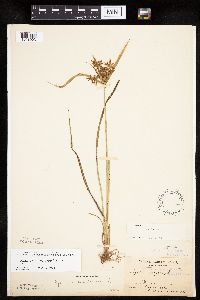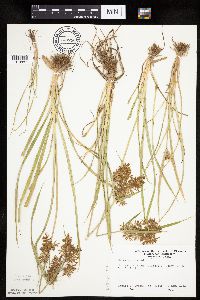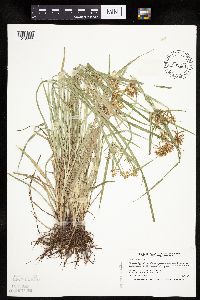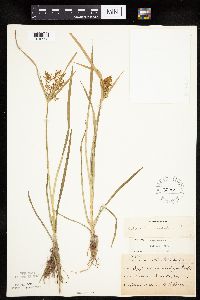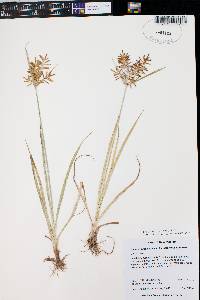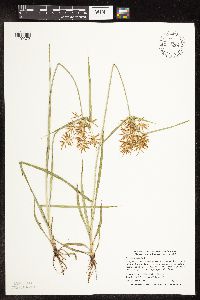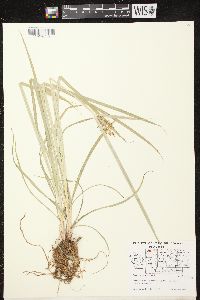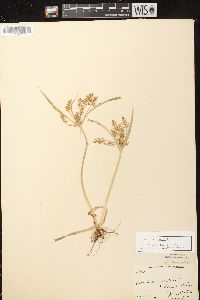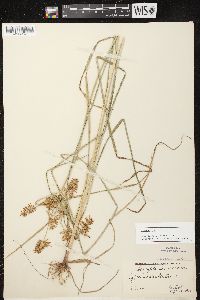
|
|
|
|
Family: Cyperaceae
Chufa, more...yellow nutsedge
[Cyperus esculentus var. angustispicatus Britt.] |
Spikelets divaricate, forming 75-90° angle with rachis, (10-)15-20 × (1.2-)1.5-2 mm; floral scales ovate-lanceolate, widest at midlength, 1.8-2.7 × (1-)1.5-1.8(-2) mm. Flowers: anthers (1-)1.3(-1.6) mm; styles (0.7-)1-1.2 mm; stigmas (1.2-)1.8(-2.5) mm. Fruiting summer. Disturbed soils, croplands; 0-1200 m; B.C., N.B., Ont., Que.; Ala., Ariz., Ark., Calif., Colo., Conn., Del., D.C., Fla., Ga., Idaho, Ill., Ind., Iowa, Kans., Ky., La., Maine, Md., Mass., Mich., Minn., Miss., Mo., Nebr., Nev., N.H., N.J., N.Mex., N.Y., N.C., N.Dak., Ohio, Okla., Oreg., Pa., R.I., S.C., S.Dak., Tenn., Tex., Utah, Vt., Va., Wash., W.Va., Wis.; Mexico; Central America; South America; introduced, w Europe. Cyperus esculentus var. leptostachyus is the most common of the varieties nearly throughout the range of the species in North America.
Perennial herb with slender rhizomes and runners 10 cm - 0.7 m tall Leaves: three to seven, basal, alternate, 20 - 40 cm long, 2 - 8 mm wide, flat or V-shaped in cross-section, linear, parallel-veined, keeled beneath, with a sheathing base that encloses the stem. Inflorescence: consisting of terminal spikes, subtended by spirally arranged leafy bracts. Bracts four to five, more or less horizontal to ascending, unequal, 5 - 30 cm long, 0.5 - 4 mm wide, V-shaped in cross-section. Rays (branches of inflorescence) four to ten, to 12 cm long. Spikes 1.5 - 3 cm long, 1.5 - 3.5 cm long, broadly ellipsoid to egg-shaped or hemispheric, consisting of ten to twenty spikelets. Flowers: minute, in the axil of a floral scale, lacking sepals and petals. Stamens exserted. Anthers about 1.5 mm long. Pistil one. Style about 1 mm long. Stigma about 2 mm long. Fruit: a one-seeded achene, stalkless, brown, about 1.5 mm long and 0.5 mm wide, oblong with a rounded apex, unequally three-angled, tiny-dotted, often not maturing. Seed with a thin, non-adherent wall. Culm: stout, 10 cm - 0.7 m long, 0.5 - 3.5 mm wide, triangular in cross-section, solid. Spikelets: widely diverging, 1.5 - 2 cm long, 1.5 - 2 mm wide, linear to linear lance-shaped, compressed four-angled, subtended by two small bracts, with six to thirty-four floral scales. Scales appressed or spreading, brownish or reddish or greenish down the middle, yellowish brown to dark brown along the sides, 2 - 2.5 mm long, about 1.5 mm wide, egg- lance-shaped with a more or less pointed apex, seven- to nine-ribbed, lowest one empty. Similar species: No information at this time. Flowering: mid-July to early August Habitat and ecology: Found in moist, fertile soil, often in cultivated areas. Occurence in the Chicago region: native Etymology: Cyperus is the ancient Greek word for sedge. Esculentus means edible. Leptostachyus means "with slender spikes." Author: The Morton Arboretum From Flora of Indiana (1940) by Charles C. Deam Rather frequent in southern Indiana, becoming infrequent to rare in the northern part. This species prefers moist or wet, rich soil and is found along streams and in cultivated fields and truck gardens. I have seen it in dried-up sloughs where it formed complete stands. We allowed it to grow unmolested in our arboretum of about 3 acres before we knew of its weedy nature and we have been trying to exterminate it for about 10 years but still find a plant occasionally. I have noted it as a pernicious weed in truck gardens, especially along the Ohio River. The tubers are sweet and edible. They have been used as food since ancient times, having been found in Egyptian tombs dating back to 2400 years before Christ. The species is extremely variable in the size of its spikelets. Plants with long spikelets have been named but I think they are a result of nutrition and should not receive taxonomic names. It is to be noted that plants with small infiorescences rarely mature more than a few seed while plants with large infiorescences usually mature many seed. |
This project was made possible in part by the Institute of Museum and Library Services [MG-70-19-0057-19].
Powered by Symbiota

